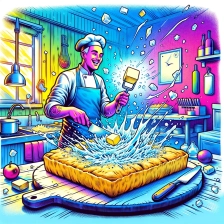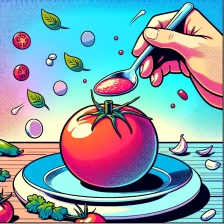In detail, for those interested!
Loss of pressure and rebounding
The loss of pressure in a squash ball over time is a known and inevitable phenomenon. When a ball is used for a certain period of time, the internal air pressure inside it gradually decreases. This loss of pressure directly affects the ball's bounce on the court. Indeed, a ball that has lost pressure bounces less high and less quickly than a new, well-inflated ball.
Squash players are very sensitive to these variations in bounce, as they can greatly influence the course of a match. A ball that bounces inconsistently due to insufficient pressure can make the game unpredictable and affect players' performances. That is why players prefer to change the ball at regular intervals to maintain optimal and fair playing conditions.
Therefore, the loss of pressure and its impact on the bounce of the squash ball are important aspects to consider when playing this sport. Players seek to ensure consistent and reliable playing conditions by ensuring that the pressure of the balls remains adequate throughout a match.
Ball wear and performance
The wear of the squash ball has a direct impact on the performance of players. A worn ball loses bounce and speed, which can alter the course of a match. Indeed, a worn ball tends to become slower and less predictable, which can disrupt the game of players accustomed to newer balls.
When the ball is worn, players must adjust their technique to compensate for this change. This can lead to unusual faults and less precise shots. It is therefore crucial for squash players to regularly change the ball in order to maintain an optimal level of play.
Furthermore, a worn ball can also affect the competitors' game strategy. Less consistent bounces can make exchanges more unpredictable and favor certain styles of play over others. To ensure fair playing conditions, it is essential that balls are replaced at regular intervals.
In conclusion, the wear of the squash ball directly impacts the players' performance by altering the speed, bounce, and predictability of the game. Regularly changing the ball is therefore essential to maintain an optimal level of play and ensure fair conditions for all competitors.
Equity and rules of the game
In squash, it is essential to maintain fairness between players to ensure a fair and balanced match. The use of balls in good condition helps to preserve this fairness by ensuring similar playing conditions for all participants. The official rules of squash state that balls must be in good condition and have consistent bounce to ensure fair playing conditions. By regularly changing balls during a match, players ensure they are following these rules and maintaining a fair competition. Fairness in ball selection also helps to preserve the integrity of the game and provide a quality experience for all players involved.
![Explain why some countries change time zones?]()
![Explain why Alexander the Great refused to wear shoes.]()
![Explain why Alexander the Great always wore an impressive helmet.]()
![Explain why the last Chinese emperor was so young when he came to power?]()





















